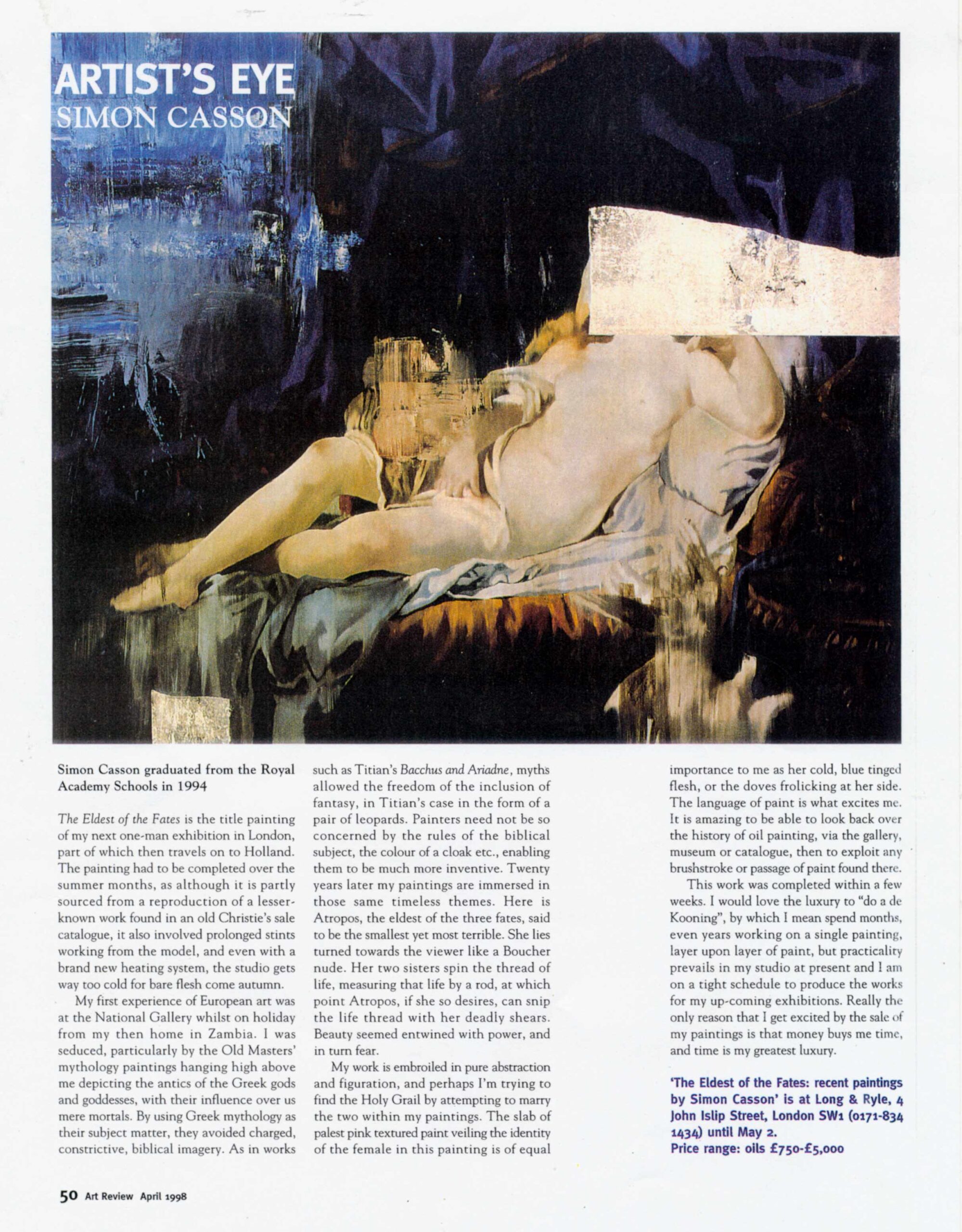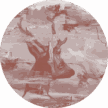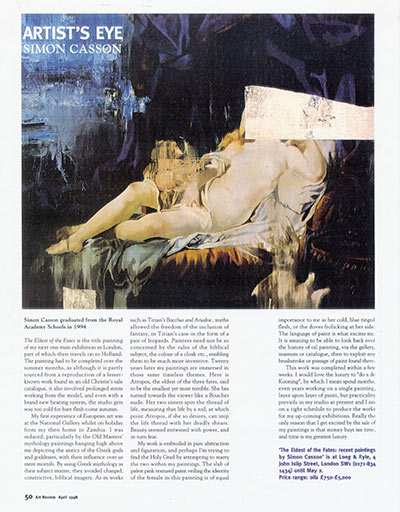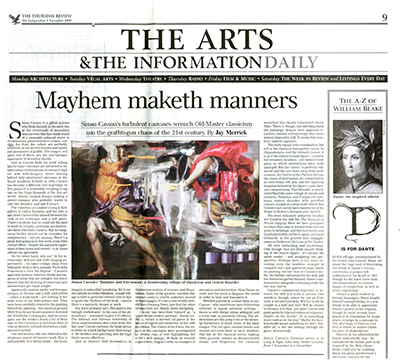Invited Artist Eye at Arts Review with reference to the Eldest of the Fates exhibition. Long and Ryle London.
The Eldest of the Fates is the title painting of my next one-man exhibition in London, part of which then travels on to Holland. The painting had to be completed over the summer months, as although it is partly sourced from a reproduction of a lesser-known work found in an old Christie’s sale catalogue, it also involved prolonged stints working from the model, and even with a brand new heating system, the studio gets way too cold for bare flesh come autumn.
My first experience of European art was at the National Gallery whilst on holiday from my then home in Zambia. I was seduced, particularly by the Old Masters’ mythology paintings hanging high above me depicting the antics of the Greek gods and goddesses, with their influence over us mere mortals. By using Greek mythology as their subject matter, they avoided charged, constrictive, biblical imagery. As in works such as Titian’s Bacchus and Ariadne, myths allowed the freedom of the inclusion of fantasy, in Titian’s case in the form of a pair of leopards. Painters need not be so concerned by the rules of the biblical subject, the colour of a cloak etc., enabling them to be much more inventive. Twenty years later my paintings are immersed in those same timeless themes. Here is Atropos, the eldest of the three fates, said to be the smallest yet most terrible. She lies turned towards the viewer like a Boucher nude. Her two sisters spin the thread of life, measuring that life by a rod, at which point Atropos, if she so desires, can snip the life thread with her deadly shears. Beauty seemed entwined with power, and in turn fear.
My work is embroiled in pure abstraction and figuration, and perhaps I’m trying to find the Holy Grail by attempting to marry the two within my paintings. The slab of palest pink textured paint veiling the identity of the female in this painting is of equal importance to me as her cold, blue tinged flesh, or the doves frolicking at her side. The language of paint is what excites me. It is amazing to be able to look back over the history of oil painting, via the gallery, museum or catalogue, then to exploit any brush stroke or passage of paint found there.
This work was completed within a few weeks. I would love the luxury to “do a de Kooning”, by which I mean spend months, even years working on a single painting, layer upon layer of paint, but practicality prevails in my studio at present and I am on a tight schedule to produce the works for my up-coming exhibitions. Really the only reason that I get excited by the sale of my paintings is that money buys me time, and time is my greatest luxury.
Arts Review Simon Casson




